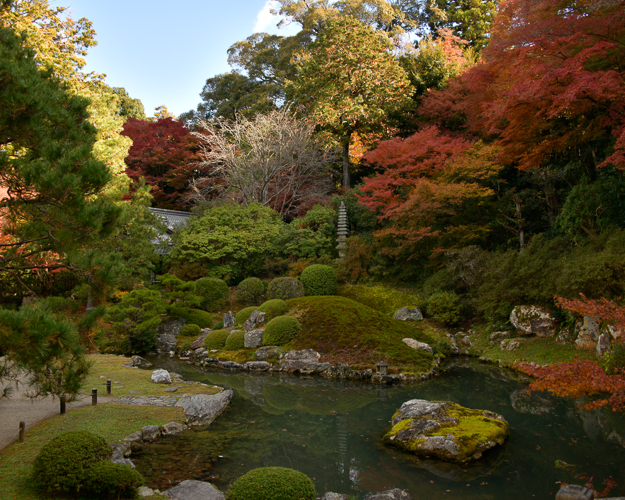January 2024
Chiyoda City, Tokyo
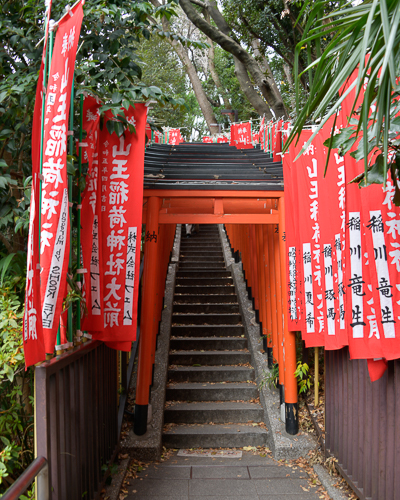
The bottom of Tori Row at Hie Shrine
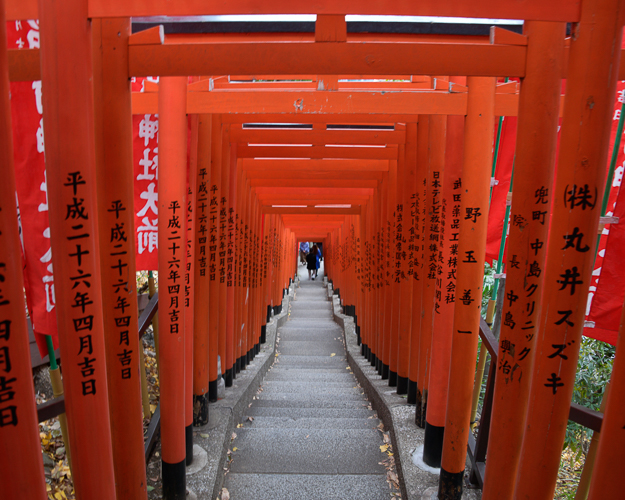
The top of Tori Row Hie Shrine
All shrines are packed to the gills during New Year’s, and Hie is no different. The shrine is close to the New Otani Hotel, and because of its 90 Tori gates, I love just stopping by and walking down the stairs.
Asakusa Tokyo
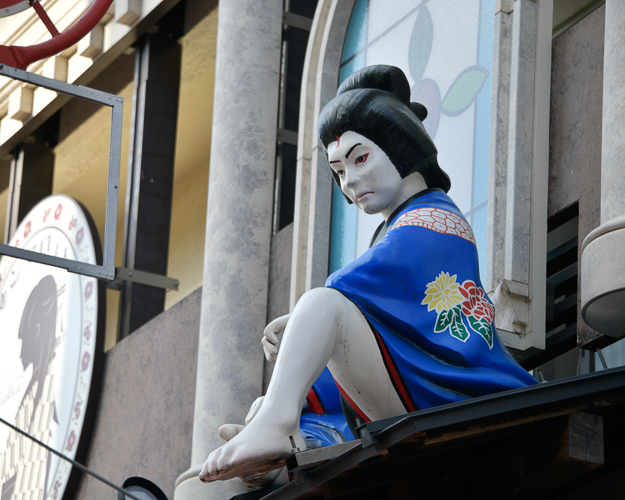
I remember these from my first visit to Tokyo. I am amazed they still reside in the neighborhood. These are two of the five heroes of Kawatake Mokuami’s Kabuki play “Shiranami Gonin Otoko.”
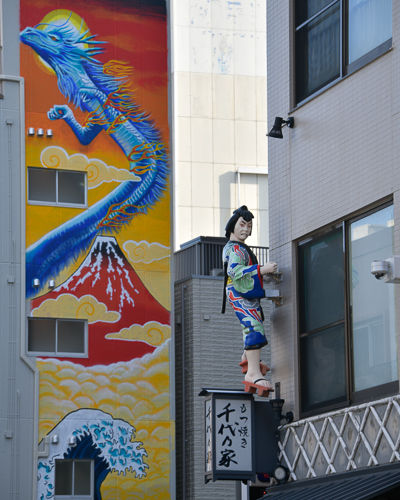
The Karioki play centers on a band of five thieves, based on real thieves and criminals of the Edo period in Osaka: Karigane Bunshichi, An no Heibei, Gokuin Sen’emon, Kaminari Shōkurō, and Hotei Ichiemon.
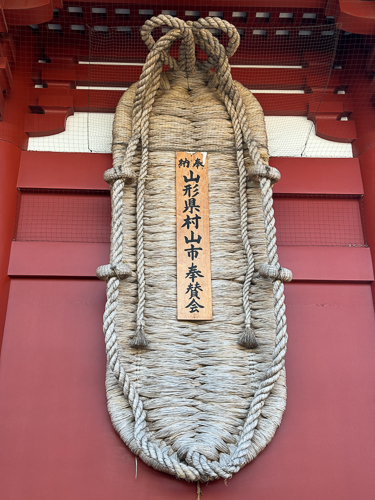
On the Hōzōmon of Senso-ji Temple is a pair of ōwaraji, or giant straw sandals. They are 14.5 feet tall and weigh 1,100 pounds.
The sandals are a larger version of a type of sandal made from straw ropes. These waraji were woven by hand in the traditional manner and made by the town council of Tate’oka-aramachi, Murayama in Yamagata Prefecture.
It is said that the sandals represent the powers of Niō, the Herculean guardians of Buddhist temples. Their presence keeps demons at bay by convincing them that the temple is home to an invincible giant. The sandals were first introduced to Sensō-ji in 1941 and since then have been replaced by a new pair almost every ten years. The current pair was put in place in 2018, and reportedly took around 900 workers over a month to make them.
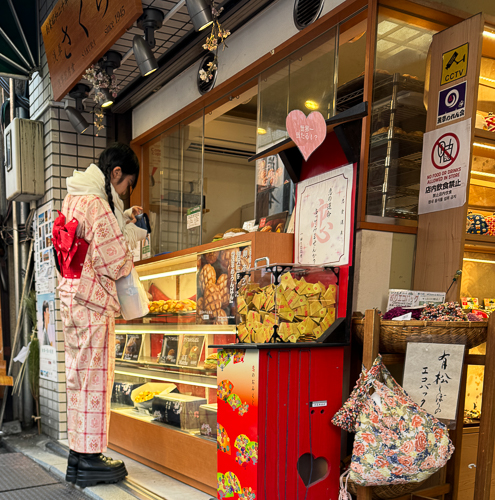 All over Japan, you will find foreigners renting and then dressing in Kimonos and visiting the more touristy areas. This girl, with her incongruous shoes, had me laughing.
All over Japan, you will find foreigners renting and then dressing in Kimonos and visiting the more touristy areas. This girl, with her incongruous shoes, had me laughing.
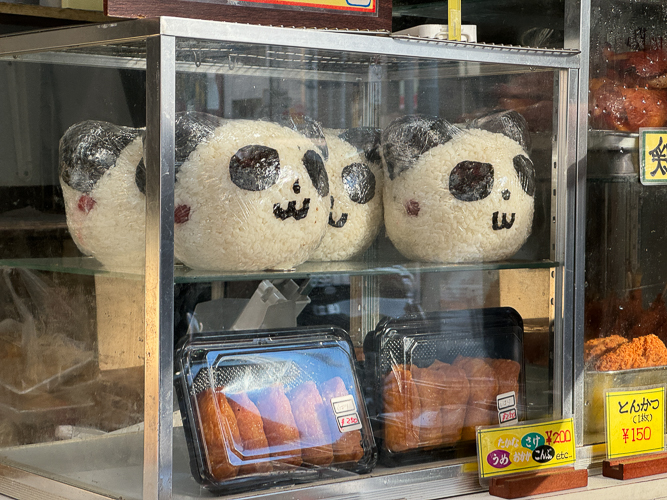
I LOVE Onigiri, but I think it would take a football team to devour these onigiri shaped like pandas.
Shibuya
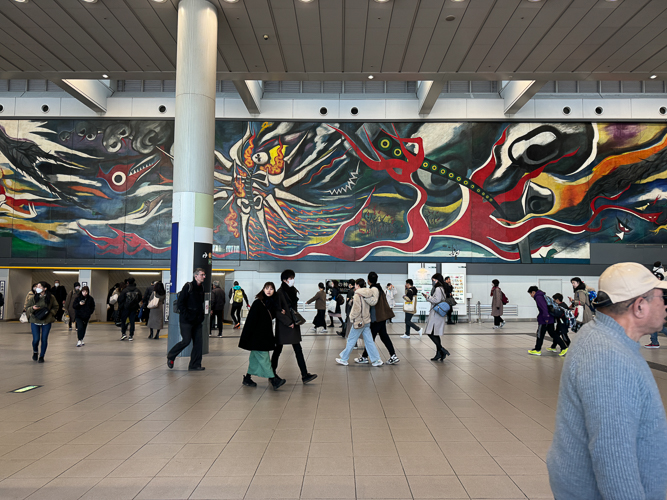
Myth of Tomorrow
In 2008, this mural by Taro Okamoto was recovered and moved to the Shibuya Station. ‘Myth of Tomorrow’ depicts the bombings of Hiroshima and Nagasaki as an eruption of vibrant colors, centering around a skeletal figure caught in the blast.
The artist started this work in 1967 when asked to paint a mural for a new hotel in Mexico City. He completed the giant mural in September 1969. The hotel went bankrupt, and the piece was never displayed. The mural then went missing for decades.
In 2003, Toshiko Okamoto found it in a Mexican suburb. Millions of dollars later in restoration, it found a final home.
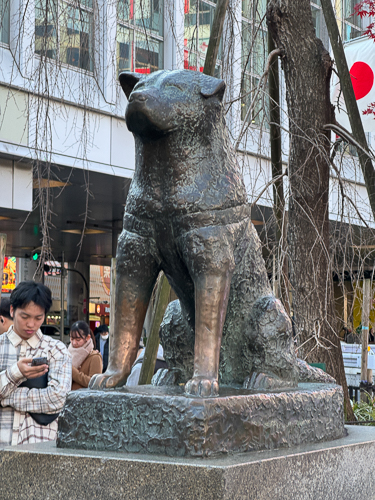
Hachiko
It is hard to believe that anyone does not know the story of Hachiko, but if you don’t, Hachiko is the name of an Akita dog who was born in 1923 and died in 1935.
Hachiko belonged to a Tokyo University professor in the 1920’s. Born in 1923, he would walk his master Hidesaburo Ueno daily to Shibuya Station and wait for his return there every evening. In May 1925, the professor died of apoplexy at his workplace. Hachiko waited for him faithfully every evening at the station for the next decade until his own death.
This statue was erected in 1934 near Shibuya station.
Toyosu Tokyo
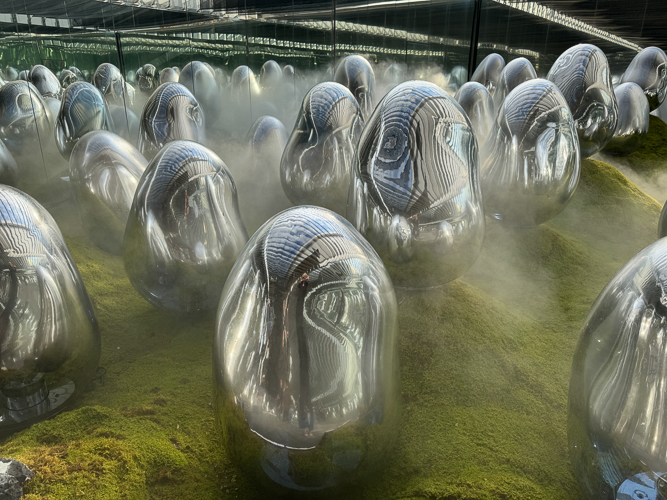
I am not a big fan of immersive art. Not that I have anything against it. It is just that it has devolved into a money-making Instagram concept. But one of the hot tickets in Tokyo is Team Lab Planet, so I went. This was the most intriguing of all of the immersive experiences. The balls wobbled, and each made a different sound, so if enough people got them moving, they could create an eerie-sounding concert.
Chuo City Tokyo
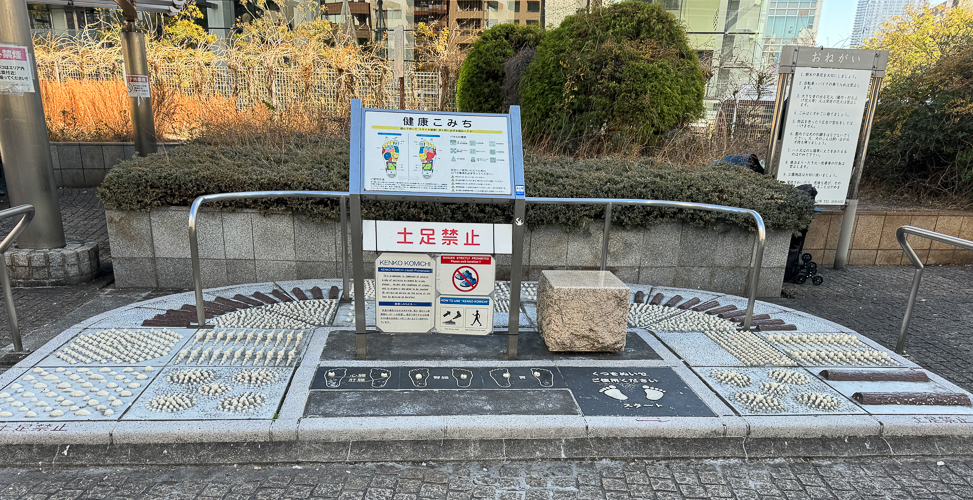
This giant reflexology unit is truly an only-in-Japan kind of thing. It is called Kenko Kimichi (Health Promenade)
The sign reads: This promenade is composed of several kinds of patterns arranged by sizes, shapes, height, and roughness of stones and is properly designed to touch 36 reflection points on the soles of the feet.
It is January 4th, and as I prepare to leave and look around at the coming of winter, it is hard for me to believe that when I arrived in Kyoto, I was greeted with the most amazing fall foliage. I have loved watching the season change over the last seven weeks.
